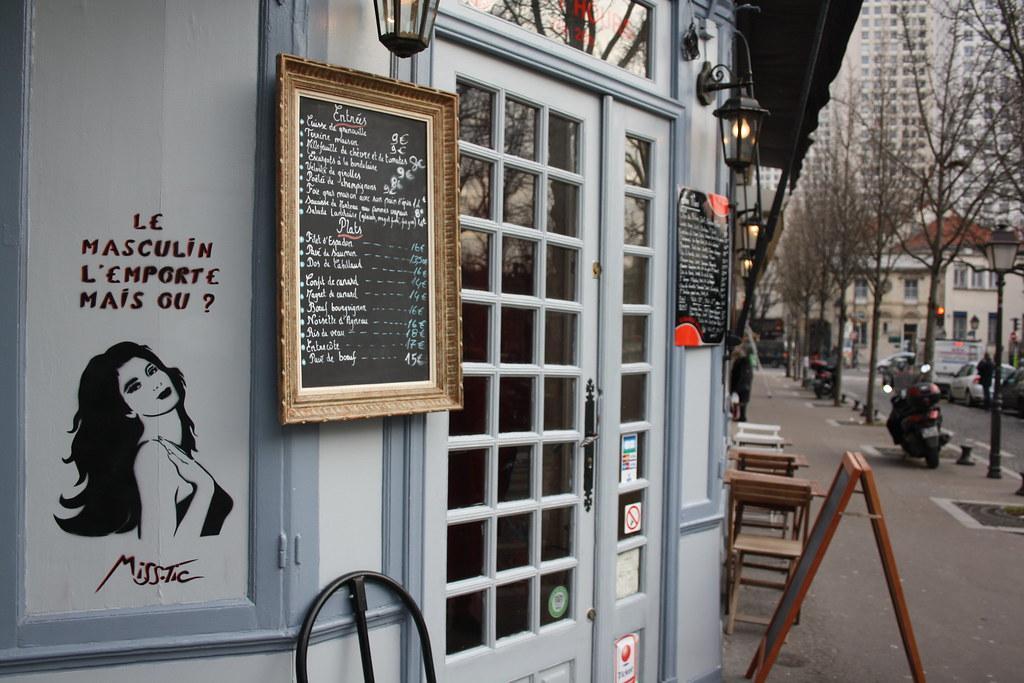
Stroll through Paris's 13th arrondissement
Categories : City Guide, published on : 2/13/25
The 13th arrondissement of Paris, often associated with its modern skyscrapers and Asian quarter, is in fact full of historical and picturesque treasures. Between cobblestone streets, flower-adorned houses, and old factories, this walk takes you through a village-like Paris. Follow the route to discover some of the emblematic spots in the 13th arrondissement, rich in history and charm.
Starting at Corvisart Metro Station: heading to the Butte-aux-Cailles
Begin your walk at Corvisart station, on metro line 6. Upon exiting, immerse yourself in the peaceful atmosphere of the Butte-aux-Cailles. This neighborhood, a former village untouched by Haussmann's renovations, is one of the most charming corners of Paris. Walking along rue de la Butte-aux-Cailles, you’ll discover a series of cobblestone streets and workers’ houses with colorful facades.
Stop at the “L’Oisive Thé” knitting café, where you can enjoy tea or a pastry while participating in a knitting session, a very popular activity in the neighborhood. It’s the perfect place to relax and mingle with locals.
Address: Boulevard Auguste Blanqui, 75013 Paris
The Gobelins Tapestry Workshop: a unique craftsmanship
Continue your walk by heading up rue Corvisart to avenue des Gobelins, one of the historical axes of the area. There, you will find the famous Gobelins Tapestry Workshop, a true gem of French heritage and a symbol of artisanal excellence. Founded in the 17th century under the reign of King Henry IV, this institution originally served as a dyeing factory owned by the powerful Gobelin family, renowned for their scarlet dyes. Under Louis XIV, with the support of Colbert, the workshop took a decisive turn, becoming the center of production for the most prestigious French tapestries, destined to decorate royal palaces and other official buildings.

The Gobelins Tapestry Workshop’s reputation has never faded. Today, it remains a place where the art of tapestry is passionately preserved by exceptional artisans. The weaving techniques, meticulously maintained over centuries, now blend with modernity through regular collaborations with contemporary artists. It’s this fusion of tradition and innovation that makes Gobelins a must-visit site of French heritage.
As you stroll around the building, you’ll notice the magnificent bas-reliefs on the facade, depicting scenes of weavers at work. These details remind visitors of the site’s long history and the complexity of the artistic trades practiced here. Don’t miss the Gobelins Gallery, which houses impressive collections of both historical and contemporary tapestries. The exhibitions change regularly, giving visitors a glimpse of handwoven masterpieces, some commissioned by royalty or presidents. This is also an opportunity to gain a detailed understanding of the unique expertise of artisans, whose work requires years of training and immense patience.
The site also offers guided tours, allowing you to delve deeper into the fascinating history of French tapestry and discover how this craftsmanship has influenced decorative arts over the centuries. For art and history enthusiasts, the Gobelins Tapestry Workshop is an essential stop on any walk through the 13th arrondissement.
Address: 42, avenue des Gobelins, 75013 Paris
The Reine Blanche Quarter: a royal history
Just a short walk from the Gobelins Tapestry Workshop, along rue Gustave-Geffroy, you’ll discover the Reine Blanche Quarter, a place steeped in history and named after Marguerite of Provence, the widow of King Saint Louis. This significant royal figure from the 13th century chose this spot by the banks of the Bièvre River to build a majestic residence. At the time, the riverside location, which supported numerous artisans and workshops, provided a tranquility and freshness appreciated by the nobility. Marguerite of Provence, clad in her traditional white widow’s attire, made this place an exclusive enclave, which quickly became known as Reine Blanche.

Although the original residence disappeared over the centuries, demolished in the early 15th century, the area continued to play a key role in Paris’s history. In the 16th century, the famous Gobelin family established dyeing workshops here, transforming the site into an industrial hub. The buildings erected during this period, once dedicated to the production of quality textiles, echo the importance of commerce and craftsmanship in shaping the identity of the neighborhood.
Today, the Reine Blanche Quarter retains this dual legacy, blending traces of its medieval past with remnants of its industrial era. As you wander the surrounding streets, you can still spot buildings from that time, including the former workshops of Jean Gobelin, located on rue Berbier-du-Mets, which once bordered the Bièvre River. These discreet vestiges serve as reminders of the river’s significance and the artisanal activities that shaped the area.
Address: 6 Rue Gustave Geffroy, 75013 Paris



